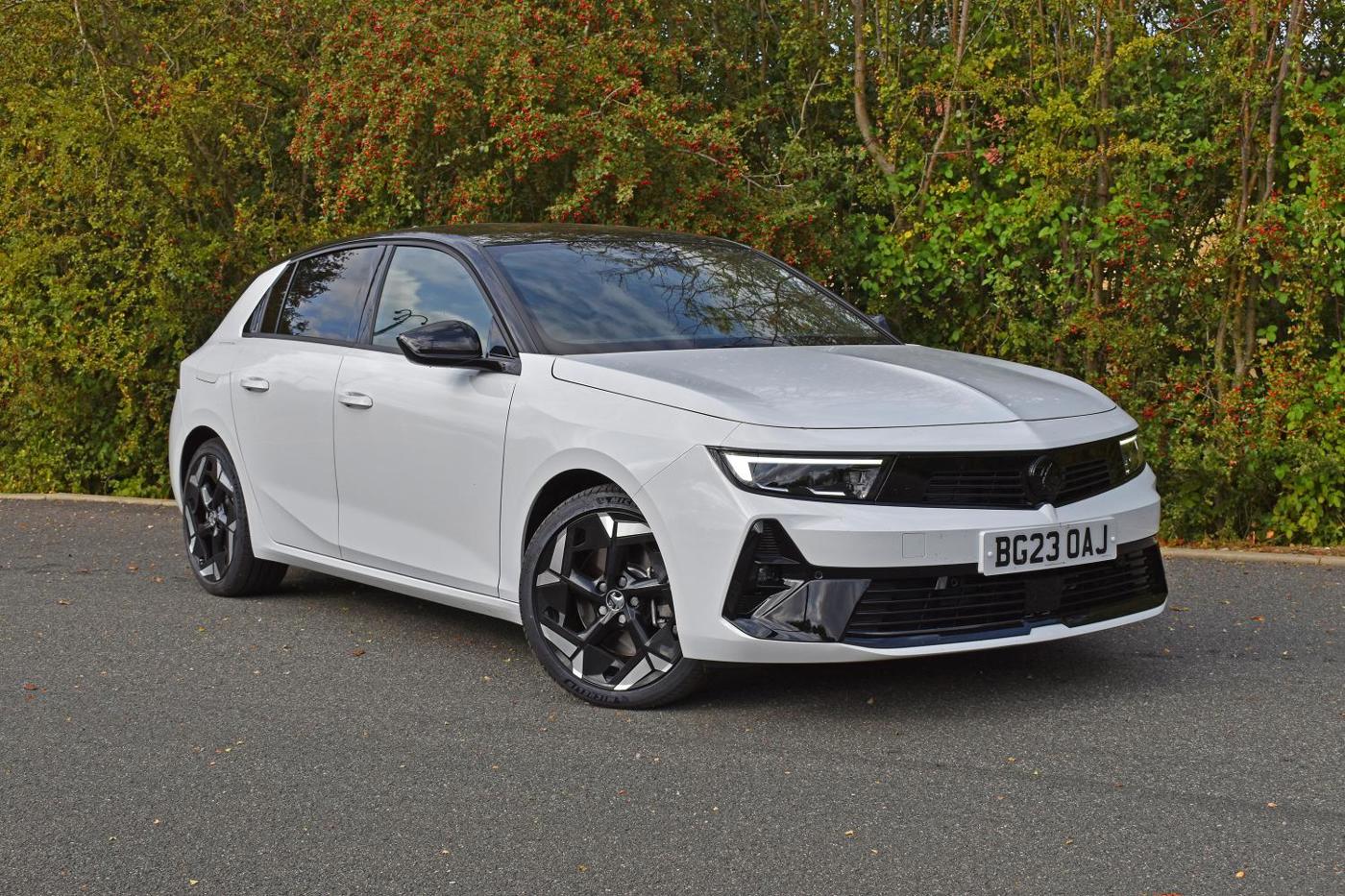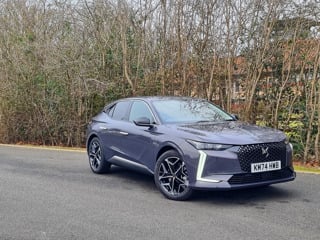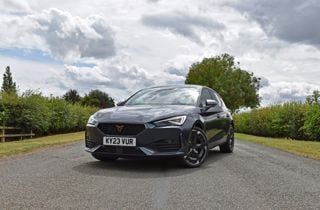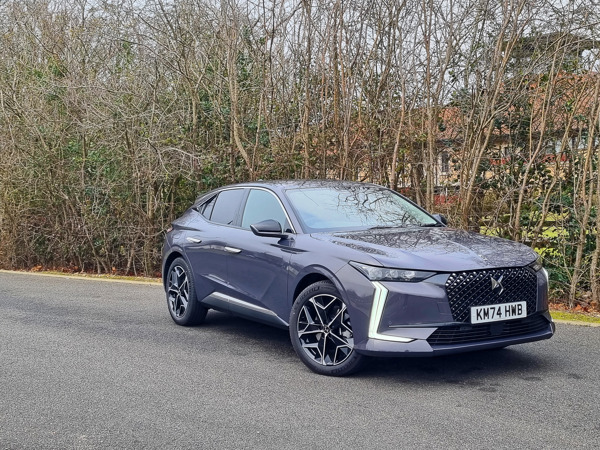Review
As our time road testing the Vauxhall Astra GSE plug-in hybrid has come to an end it’s a good opportunity to reflect on the past months and miles.
I was impressed by the Astra GSE's modern and ergonomic interior. The cabin boasts premium materials, intuitive controls, and ample space for a family of four. And it comes equipped with a host of advanced technology features that enhance both convenience and safety, from adaptive cruise control and lane-keeping assist to a user-friendly touchscreen interface for its infotainment system. And, thankfully, tactile buttons for key heating controls rather than cram everything into the touchscreen.
A couple of glitches with the infotainment system, as I’ve mentioned in previous reports, seemed to have been ironed out by some over-the-air software updates as the final month or two with the Astra GSE were trouble free.
While its GSE badge signifies a sporty intent, I found this car to be a more adept commuter car than an outright hot hatchback. Lowered suspension and a sports mode selector helps, but its acceleration is adequate. Drivers must also decide whether they want its battery charge for boosting outright power or peaceful zero emissions driving in built-up areas – I tended to choose the latter. Through the winter it sadly delivered only 20 miles or so per full charge, but thankfully the battery could be replenished within three hours on a type 2 connection home charger, for cost-effective commuting.
Overall, the styling and equipment levels of this car will help it appeal to drivers torn between a desire for a company car that stands out from the pack and a need to be seen to be emissions-conscious.
Best for fleets?
Our GSe is the flagship Astra, offering the highest specification and the best performance of the line-up. But Vauxhall offers the Astra in a range of different models, including a fully electric version.
The most basic Astra uses a 1.2-litre turbocharged petrol engine and while it's the cheapest to buy, from a fleet perspective, it's not the cheapest to run. Drivers will face 29% benefit-in-kind (BiK) tax, while running costs are 41p per mile.
It's a similar story for the recently introduced Astra Hybrid. That sits in the 26% BiK band and has running costs of 42p per mile.
The Astra Electric is the cheapest for drivers, attracting 2% BiK. Fleets will pay around 43p per mile in running costs.
That leaves the Astra Plug-in Hybrid. It has the lowest running costs - just 39p per mile in GS trim - and BiK is 12%. Compared to our GSe model, the 'regular' plug-in hybrid develops less power. You get 180PS instead of 225PS.
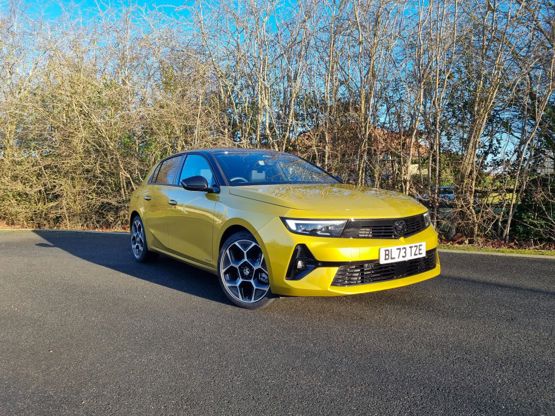
We spent a week in an Astra Ultimate Plug-in Hybrid, to see how it compared to our GSe model. Firstly, the Astra's striking design is very much present and correct on both models. If anything, the Ultimate highlights how modest the GSe's visual modifications are. On the inside there's a familiar plush interior with the same Vauxhall Pure Panel twin-screen setup.
Both cars feel remarkably similar to drive around town, utilising their electric motors. Once you get onto the open road the GSe's additional power is noticeable at the top end, but the 180PS version still feels eager enough.
We didn't notice any difference in efficiency between the two cars. Around 45mpg in mixed driving was reported by the trip computer.
Switch to B roads and the GSe's clever suspension really shows its strengths. The Astra provides keen handling in any guise, but the GSe is more confident in the bends without impacting ride comfort.
With both cars priced similarly and both offering a generous level of standard equipment, it's difficult not to opt for the GSe over the Ultimate as it's a better car to drive with no real compromises.
Range and efficiency
As a parent of a couple of fairly environment-aware students I feel bound to set an example whenever we go out as a family, and so I usually pick the PHEV Astra on the drive instead of our larger, but ICE-powered, family SUV.
I appreciate its ability to transport us around the city while producing zero tailpipe emissions, even though this winter I’ve been getting nothing close to its claimed 35 miles electric range. Between 15 and 20 miles is the best I’m getting before the car automatically switches from EV Mode to Hybrid. This is probably not helped, as I’ve mentioned before, by the need to press a button to activate the regenerative braking mode. Until it became habitual a few months into using this Astra GSe, often I would be four or five miles into a journey before muttering “Oh blast it!” and remembering to press the ‘B’ button.
When we tested the car in the summer, it was managing around 30 miles to a charge.
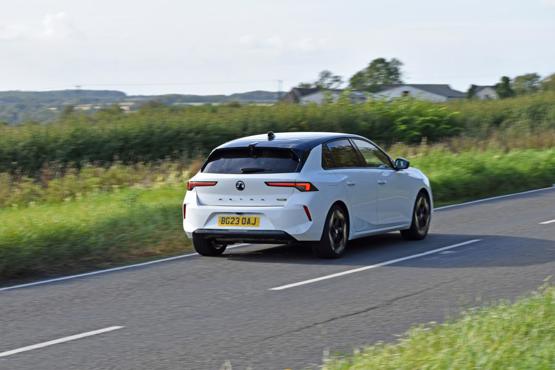
With the MyVauxhall app it is possible to pre-heat the car on cold morning, while it's still plugged in to a charger. This is very convenient and, more importantly, it helps to boost the car's electric efficiency and provides a few more miles of zero-emission driving.
Thanks to our car’s optional 7.4kW charger (£500) a depleted battery can be back to 100% charge from my home PodPoint charger in around two hours (cars without that option will need 3.5 hours with the standard 3.7kW charger). Sadly the high cost of public charge points means that I tend to charge only at home or at work as otherwise the cost outweighs the mileage benefits
The Astra GSe is comfortable and spacious enough with four of us on board, and proves itself ideal for shopping trips and weekend breaks. Despite its PHEV powertrain, the GSe has a 352-litre boot, the same as a standard ICE Astra. That’s on a par with many rivals – the Peugeot 308 225 Hybrid is marginally better at 361 litres, the VW Golf GTE is smaller at 272 litres – and it is easily adequate for a trio of overnight carry-on cases.
With a number of long distance trips the average fuel efficiency has remained resolutely around 42mpg, according to the trip computer. To me, that seems a little disappointing, but company car drivers who pick this hottish hatch may feel differently if they have a shorter commute.
The best we've seen was 65mpg, which was managed during a week of mainly shorter trips, where the Astra's battery was better utilised.
Hot or not?
Vauxhall is no stranger to sporty monikers. There’s been SR, SRI, GSI GTE and VXR versions of its cars for decades. Many of which have gained a cult following. Even the humble Meriva was once gifted a turbocharged flagship.
In the era of electrification a new approach is needed. Which is why Vauxhall has introduced GSe. Perhaps we should say ‘reintroduced’, because the GSe badge does have some heritage. It was used on the Opel Monza, back in the 80s.
GSe in 2024 stands for ‘Grand Sport Electric’. It’s the flagship trim level for select models in the Vauxhall range and is likely to be the catalyst for some sporty EVs further down the line.
For now, it’s just the Astra and Grandland, equipped with plug-in hybrid engines, that get to wear the GSe branding.
Our Astra long-termer is one such model. Unlike a regular Astra PHEV, which has a power output of 180PS, the GSE deploys 225PS. It also benefits from a unique suspension set-up, as well as a custom steering calibration, to offer more agile and precise handling characteristics.
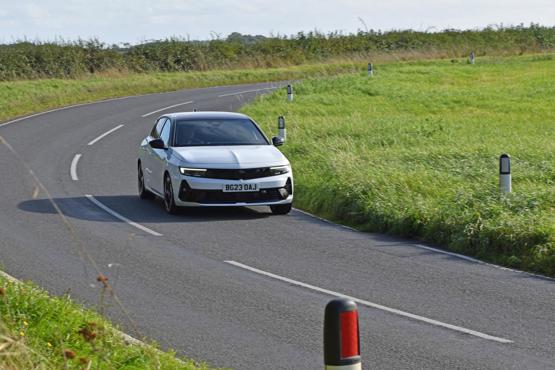
Vauxhall turned to suspension specialist Koni for the Astra GSe’s dampers. They feature frequency selective damping, which enables different damping characteristics depending on how the car is driven.
It’s not quite as sophisticated as the adaptive dampers found in some models, such as the VW Golf’s optional DCC system, but it does mean if you really throw the car into a bend the suspension reacts much more firmly than if you’re just pottering around. The upshot is a comfy ride in normal driving and a firmer, more engaging feel when you press on a bit.
The Astra’s ESP system has also been recalibrated so it’s less intrusive than it would be in a ‘regular’ Astra.
Is the Astra GSe a fully-fledged hot hatch then? Well, 0-62mph in 7.5 seconds, 18-inch alloy wheels and sporty alcantara seats certainly tick a lot of the right boxes. But this isn’t a replacement for the Astra VXR. The plug-in hybrid engine lacks emotion, not only from its muted exhaust note but also its laggy automatic gearbox. The car’s handling is tidy, but not razor sharp. We do really like the way it looks and there’s plenty of technology on board to make travelling more endurable.
The Vauxhall’s key rivals are the Cupra Leon VZ2 and the VW Golf GTE. Both use the same 245PS powertrain, giving slightly more potent acceleration than the Astra GSe, while the company car tax proposition for all three vehicles is very similar.
Drivers that want the most equipment will find the Astra most appealing and it also has the lowest running costs of the trio, costing 42p per mile over a typical four-year 80,000 mile cycle.
Technology can frustrate
Shouldn’t in-car technology exist to make our lives easier and safer? Cars are being loaded with so many safety and information systems that it’s easy to feel that we’re at the helm of a mobile computer rather than simply steering four wheels from A to B.
Many systems work without us hardly consciously realising, others function only on our command. It’s the latter that has raised my blood pressure. There have been a few frustrating incidents in this Vauxhall Astra GSe.
One week, the voice control simply failed to be present. The car’s screen proudly displays a ‘Hey Vauxhall’ microphone symbol, plus there’s a button on the steering wheel. Use of either prompted a ‘not available’ message consistently for three days, then mysteriously it started working again.
In this era of touchscreen controls, I value voice control immensely as a gadget aimed to help drivers remain focused on the road. With it not working I suffered the inconvenience of pulling into a layby to set the sat-nav destination and select a radio station.
More alarming still was the one night that the entire infotainment screen went blank as I was about 10 miles into a 120-mile journey home from Surrey. Just as I contemplated a navigation-less drive, it rebooted after 30 seconds or so, and thankfully hasn’t repeated the experience since.
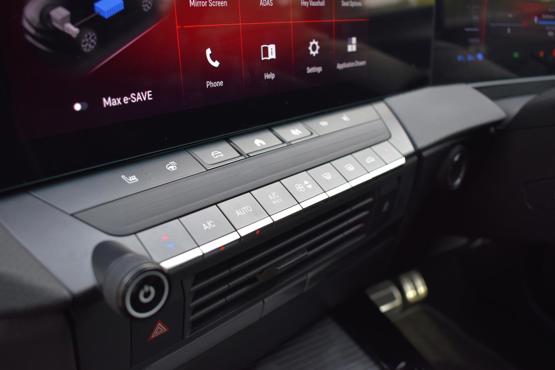
Its keyless entry system has a mind of its own too. Sometimes it’ll unlock as I approach the driver’s door, sometimes not. To my amusement, it often locks passengers inside the car when I’ve got out to pay for fuel or open the garage.
I am pleased that the Astra GSe still has normal buttons beneath the touchscreen to control the air-conditioning and change the stereo’s volume. Once behind the steering wheel it is quite a nice place to be. The cabin materials feel good quality, there’s good storage in the centre console and everything is where one would expect it to be.
Given its hybrid credentials, however, I would really like the regenerative braking to be active by default, and similarly its Max-e save function, which preserves the battery charge until the driver wants to use it. I find that too often the battery is drained before I reach a built-up area where I’d really prefer to go under electric power.
Vauxhall Astra GSe joins our fleet
A Vauxhall Astra GSe plug-in hybrid has been a welcome addition to the Fleet News long-term test fleet.
GSe stands for Grand Sport Electric and is the new performance sub-brand from Vauxhall, integrating electric performance credentials with sharp handling and styling. On this Astra, it is a compelling combination of sporty looks, ample comforts and a 12% BIK rate, thanks to 30g/km CO2 emissions, which could tempt some user-choosers to take the plunge. That benefit counts for much, as it is the most expensive variant in the Astra range.
Powering this hatchback is a 1.6-litre four cylinder petrol engine connected to an electric motor for a total power output of 225PS and maximum torque of 360Nm. With a 7.5 second 0-62mph sprint this is a warm, rather than truly hot, hatchback but its nicely direct steering and good body control help it feel more fun than figures alone suggest.
Another official figure that defies reality is its EV mode range. Vauxhall says that thanks to its 12.4kWh battery, Astra GSe models could achieve up to 35 miles of electric range. A full charge disappears much more quickly, in my experience. I’ve not quite managed 30 miles on typical suburban drives.
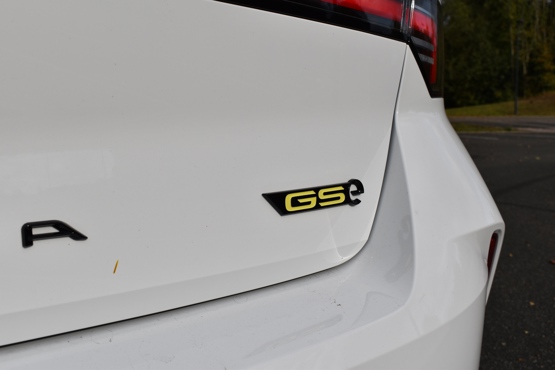
Nevertheless, those drives have been pleasant enough, even with four adults on board. The Alcantara-clad seats are supportive and I’ve had no complaints from passengers even on three-hour journeys.
The GSe gets Vauxhall’s Purepanel Pro infotainment system, which works out of a 12-inch touchscreen next to an instrument cluster of the same size. The former is OK in terms of response, uses a logical layout, and features crisp graphics plus wireless Android Auto / Apple Carplay smartphone connectivity. Other equipment highlights include a 360-degree parking camera, Vauxhall’s Intelli-Drive 2.0 suite of driver-assistance systems, wireless phone charging and a head-up display.
Unique GSe exterior styling is limited to new front and rear bumpers, special 18in black alloys, a black roof and a few minor alterations, and it leaves me wondering if there should be more. Parked on the drive, under the scrutiny of neighbours, does the Astra GSe look like a £43k car? I’m not convinced.
As AM editor, Tim is responsible for the media content planning and production of AM's multiple channels (AM print and digital magazines, website, social media and contributing to our events planning). He interviews and write about as many franchised dealer groups and UK divisions of motor manufacturers as possible, to explore the issues facing UK motor retail and understand what solutions dealers and suppliers are using to overcome these.


Specs
| Manufacturer | Vauxhall |
| Model | Astra Hatchback |
| Specification | Vauxhall Astra Hatchback 1.6 Plug-in Hybrid GSe 5dr Auto |
| Model Year | 2023.00 |
| Annual VED (Road tax) | £110 |
| BIK List Price | £41,145 |
| Range | 41.00mile(s) |
| CO2 | 25g/km |
| BIK Percentage | 8% |
| Insurance Group | N/A |
| CC | 1,598 |
| Fuel Type | Petrol Parallel PHEV |
| Vehicle Type | Medium car |
| Luggage capacity (Seats up) | 352litres |
| Doors | 5 |
Running Costs
| P11D | £41,145 |
| Cost per mile | 51.98ppm |
| Residual value | £13,825 |
| Insurance group | N/A |
| Fuel Type | Petrol Parallel PHEV |
| Cost per mile | 199.42ppm |
| Fuel | 2.61ppm |
| Depreciation | 194.25ppm |
| Service maintenance and repair | 2.56ppm |
Rivals
Info at a glance
-
P11D Price
£41,145
-
MPG
256.0 (WLTP) -
CO2 Emissions
25g/km -
BIK %
8% -
Running cost
3 Year 60k : £13,825 4 Year 80k : £11,050 -
Fuel Type
Petrol Parallel PHEV -
Range
41.00mile(s)



